Brian Murphy's Blog, page 36
March 30, 2021
Confess, Rob Halford (2020), a review
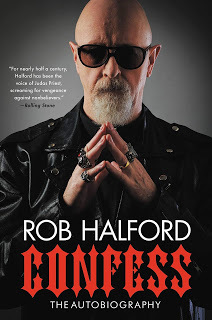 The Metal God tells all...I’m a raging Judas Priest fan, and chances are if you like metal you are too. I frequently vacillate between Priest and Maiden as the greatest metal band ever. When I hear the notes of The Hellion/Electric Eye I’m tempted to just say, fuck it, Judas Priest.
The Metal God tells all...I’m a raging Judas Priest fan, and chances are if you like metal you are too. I frequently vacillate between Priest and Maiden as the greatest metal band ever. When I hear the notes of The Hellion/Electric Eye I’m tempted to just say, fuck it, Judas Priest. So I was pleased to be able to buy and finally read lead singer Rob Halford’s “tell all” Confess. This highly anticipated biography came out in September 2020 and a couple of my friends were like “you’re just reading that now?” But hey, what can I say, my TBR pile is towering and ridiculous.
Straight off, if you’re a gay-hater, you’ll hate this book (and you may also wish to engage in some self-introspection, there is no choice in the matter for a man like Rob Halford, who simply knew he was gay from a very young age). In places Rob went a bit overboard on his descriptions of his various and often sordid sexual encounters. I couldn’t believe the lead singer of such a hugely popular band had to resort to trolling in truck stops, for example. So if you’re squeamish about these things or a prude you should probably skip the book. But, these passages serve to underscore the double life Halford was forced to lead, and the separate identities—bad ass metal god, sensitive closeted gay man—he had to maintain and (attempt) to balance.
Not always well as it turned out.
Rob Halford is immensely talented, but also very human and this artificial duality likely led to his substance abuse problems. Confess gives the full treatment of Rob’s spiraling alcoholism and cocaine use that led to an attempted suicide via O.D., check-in to full-on rehab, and 35 years and counting of sobriety.
But this book is far from dark, or depressing. Or even typical rags to riches story. It’s extremely British—Halford is from Walsall, north of the industrial steel producing city of Birmingham, whose blue collar work ethic was part of what made him so driven and successful, and whose ceaseless sound of the ironworks and ash-choked air led to the development of heavy metal’s sound and feel. I was introduced to an entire new British vocabulary that at times veers into A Clockwork Orange territory. Pass the thesaurus. We get Spinal Tap moments, including falls off his trademark Harley Davidson while driving the machine on stage, early career drummer turnover (Spinal Tap HAD to have used Priest as inspiration for their spontaneous combustion/bizarre gardening incident jokes), broken down tour busses, fist-fights, debauched recording sessions in Nassau. At the tail end of his solo career Halford veered into some truly weird synth-driven industrial crap music, complete with ridiculous eye shadow and fu Manchu look that resulted in him playing in front of a few dozen spectators in bars. While Rob has dedicated his life to heavy metal—he trademarked his moniker “Metal God,” and his band was THE first to embrace the heavy metal label, and give it its signature look and sound—he doesn’t take it all so seriously. In 2014 he brought the talented but fully tongue in cheek Steel Panther on tour with Priest, a band that both loves and mocks all of metal’s excesses.
Confess has the details fans are looking for. We get a pretty good recount of the ridiculous (in hindsight) 1990 lawsuit by the families of two young fans who entered into a suicide pact (one was successful and blew his head off with a shotgun, one was left disfigured after pulling the trigger and later was successful in killing himself with pills), and whose parents sued Judas Priest for inciting the incident. Their case centered on blaming Priest’s song lyrics as well as “subliminal messages” that could supposedly be heard by playing some of their songs backwards, and encouraged their sons to “Do It.” While it’s hard to believe this suit actually made it to trial, it set an important precedent for free speech and free expression. Judas Priest was thankfully exonerated, and went on to perhaps their most successful tour in support of the immortal Painkiller album.
And we get many jaw-dropping big-band moments, like Rob being asked to step in for Ozzy Osbourne for a Black Sabbath show in 1992 when the latter fell ill, at a moment’s notice, and winning over the crowd. Singing in front of a quarter of a million fans at the U.S. Festival in California in May 1983. Coming out as a gay man on MTV in 1998, which was completely unscripted and left the interviewer in shock. Lady Gaga, a noted heavy metal fan, stopping during a concert and bowing to Rob. Meeting the likes of Queen Elizabeth and the lead singer of Queen, Freddie Mercury. Opening up for Led Zeppelin as a relatively unknown supporting act in 1977, in front of 80,000 fans, and later sharing a helicopter ride with Jimmy page. On and on—what a life, what a career.
Still, I wanted more. As I felt after reading other biographies of individuals whom I admire and respect (“What Does This Button Do” by Bruce Dickinson, for example), I was left wishing there was more said about the art, not just the artist. I wanted more perspective from Rob on songwriting, and how the music was composed. I wanted more on his ability as a singer, as I believe he may be the greatest heavy metal singer of all time (perhaps better than even Ronnie James Dio? Heresy? It’s close, at least. I have hashed out this argument here on The Silver Key and it will continue to be fought over, ad nauseum, for as long as there are metal fans on this planet earth. But certainly Halford belongs in any self-respecting metal fan’s top 5 vocalists of all time). And yet, there is surprisingly little about his enormous vocal talents in Confess. I can only speculate that it’s because Halford is so humble and self-deprecating, and it might have seemed boastful to him, and out of character. I also wanted more on his evaluation of Priest’s place in the metal pantheon, and in music history. Where they stand, what he considers their finest hour. There’s also not a heck of a lot on the departure of original guitarist KK Downing in 2011. Instead, Rob returns again and again to the personal, an examination of the inner life rather than the outer. I had to remind myself that when you read a biography, you’re reading a biography of a person, not a band (or a brand). So I can accept the choices he made in writing it.
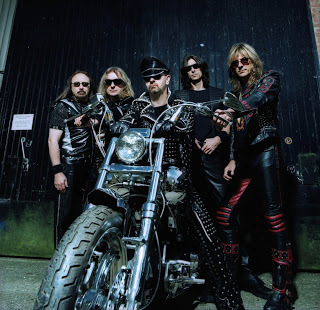 That's some bad-assery, right there.By the end of the book I was genuinely moved, even to a tear, by this beautiful man’s humility and introspection. He made mistakes, and owned them. He had regrets, and expressed them. He realized he was not living true to himself, and rectified it as best he could. He had a strained relationship with his father, and worked on it, reaching some measure of closure by the end of his Dad’s life. Rob has what I believe to be a high degree of agreeableness as a personality trait, which may sound lovely and positive, but can often lead to very negative consequences, and which I have found to be true in my own life. For example, not confronting simmering issues within the band, trying to smooth things over while you pursue a solo career, not resigning but not committing until the other members of Priest finally and understandably lost patience and found a new singer, Tim “Ripper” Owens, in 1996. Unlike some other pity-wallowing biographies of rock stars who never reached this level of introspection—see KISS drummer Peter Criss’ biography as Exhibit A—Rob owns up to his failures. That makes his triumphant return to Priest in 2004, and self-realization of who he was, an absolute joy to read, and lends this book a wonderful joyous turn at the end.
That's some bad-assery, right there.By the end of the book I was genuinely moved, even to a tear, by this beautiful man’s humility and introspection. He made mistakes, and owned them. He had regrets, and expressed them. He realized he was not living true to himself, and rectified it as best he could. He had a strained relationship with his father, and worked on it, reaching some measure of closure by the end of his Dad’s life. Rob has what I believe to be a high degree of agreeableness as a personality trait, which may sound lovely and positive, but can often lead to very negative consequences, and which I have found to be true in my own life. For example, not confronting simmering issues within the band, trying to smooth things over while you pursue a solo career, not resigning but not committing until the other members of Priest finally and understandably lost patience and found a new singer, Tim “Ripper” Owens, in 1996. Unlike some other pity-wallowing biographies of rock stars who never reached this level of introspection—see KISS drummer Peter Criss’ biography as Exhibit A—Rob owns up to his failures. That makes his triumphant return to Priest in 2004, and self-realization of who he was, an absolute joy to read, and lends this book a wonderful joyous turn at the end.Pardon the pun but Halford did in fact, confess. Huge respect to him for writing this book.
March 23, 2021
Swords & Sorceries: Tales of Heroic Fantasy
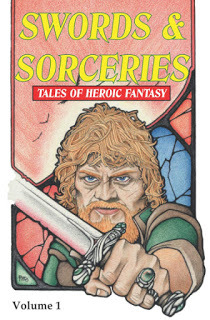 KEW? Is that you?Swords & Sorceries: Tales of Heroic Fantasy (2020, Parallel Universe Publications) was for most of its 219 pages an enjoyable read. I can recommend this one.
KEW? Is that you?Swords & Sorceries: Tales of Heroic Fantasy (2020, Parallel Universe Publications) was for most of its 219 pages an enjoyable read. I can recommend this one. I tend to react to a lot of new sword-and-sorcery with indifference, but I don’t think S&S fares any worse than other subgenres or most writing in general (the same can be said of my blog, where a handful of posts I’ve written seem to get regular traffic, but most collect dust). This book had as many hits as misses, which beats par for the course for many anthologies. Four standouts for me:
“The Horror from the Stars,” Steve Dilks. This was my first story from Dilks and I will definitely plan on reading more from him (his Gunthar collection has been on my to-purchase list). Reminded me of Charles Saunders’ Imaro with its bad-ass black main character on a path of vengeance. Well-written heroic fantasy with some great fight scenes and real weirdness layered in.
“Disruption of Destiny,” Gerri Leen. A quiet story, probably will not be what most readers who purchase this volume want or expect, but I really enjoyed it. It reminded me of a couple tales in the Gerald Page/Frank Reinhardt-edited Heroic Fantasy that question the warrior’s path and the damage wrought by a violent lifestyle. The protagonists’ suffering and care for her son were palpable, and I liked that the ending was a bit ambiguous. It stayed with me.
“Red,” Chadwick Ginther. I think this was the best story in the antho. The style reminded me very much of Joe Abercrombie—a bit crass, unflinching in its violence, seasoned with humor. Very, very well written at the sentence level, and the main character, a swordswoman named Red, was skillfully developed, and her motivation in this relatively straightforward story convincing. No infodumps. A scene in which she is swimming for her life underwater was particularly effective, and the final monster was grossly satisfying. This line: “Her sword was a strangely comforting weight on her breast. It filled the hollow in her gut that told her Needle was already dead” made me take notice.
“The Reconstructed God,” Adrian Cole. I was initially put off by the non-human/familiar demon protagonist, but damn if Cole—author of the revived Elak stories and the Dream Lords series—didn’t make the little imp work. A fine cross/doublecross tale populated with a bunch of roguish, self-interested thieving/scheming types, in the vein of a Jack Vance Cugel story. Good world-building here, but deft, not heavy-handed.
I loved the homages to classic sword-and-sorcery sprinkled throughout. I mentioned the Dilks story owing something to Saunders; Steve Lines’ “The Mirror of Torjan Sul” took its style and verbage from Clark Ashton Smith, while Geoff Hart’s “Chain of Command” was a straight up homage to Fafhrd and the Gray Mouser, albeit with a role/sex reversal (too Leiber on the nose for my tastes, but I appreciated the sentiment). Cole threw in a nice reference to an old classic with his use of “Thorgobrund the jeweler” (I see what he did there). And the introduction by editor David Riley pays tribute to one of the first volumes in the Pyramid anthologies that started it all, the classic L. Sprague de Camp-edited The Spell of Seven(1965).
All the other tales had points of merit. “The City of Silence” started excellent, with a shocking injury suffered by its protagonist, but ended flat (there were a few flat endings to otherwise fine stories, including “Trolls are Different” by Susan Murrie Macdonald). “The Mirror of Torjan Sul” had a fine, hot, demonic foe and was set in a well-drawn, atmospheric necropolis.
Of course I have to mention the nice artwork by Jim Pitts. I love seeing these veteran sword-and-sorcery artists get work thrown their way (I was pleased to be able to do the same for Tom Barber, who illustrated the cover of Flame and Crimson). I liked the cover illustration but also the skulls and motif art throughout.
I am looking forward to volume 2, and hope that vol. 1 sells well enough to encourage further volumes in the series—and helps spur the steady trickle of new sword-and-sorcery/heroic fantasy that we’re currently seeing.
March 7, 2021
A review of Ghost Rider: Travels on the Healing Road (Neil Peart)
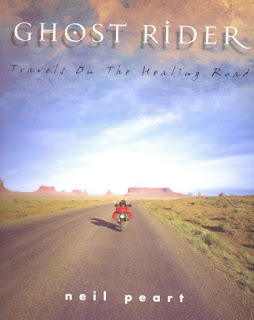 Ghost Rider: Travels on the Healing Road (2002) did not quite meet my expectations, both the book itself and in a larger sense who I believed/expected Neil Peart to be. In life Peart was such a private person that I knew very little about him, even after listening to Rush for decades, seeing them in concert some 6-8 times, and reading articles and interviews here and there. With Ghost Rider I spent 460 pages inside Peart’s head, and now feel like I know him a lot better.
Ghost Rider: Travels on the Healing Road (2002) did not quite meet my expectations, both the book itself and in a larger sense who I believed/expected Neil Peart to be. In life Peart was such a private person that I knew very little about him, even after listening to Rush for decades, seeing them in concert some 6-8 times, and reading articles and interviews here and there. With Ghost Rider I spent 460 pages inside Peart’s head, and now feel like I know him a lot better. The bulk of the book consists of reprinted letters to his friends written and sent while on the road from approximately 1998-2000, during some 2 years of solo motorcycling that took him across Canada, North America, and Mexico. Peart would get up early and ride his BMW motorcycle all day, stopping at hotels around 4 or 5 p.m. to eat, drink, and smoke, occasionally tour the local scenery, and write letters. He often rode through the rain or navigated unpaved roads, putting a beating on his bike which necessitated frequent repairs. Peart is revealed as a lover of nature, an aficionado of good food and wine/scotch whiskey, books including the likes of Jack London (he’s a fellow The Sea-Wolf and Martin Eden fan, I was pleased to discover), and someone who valued staying connected through letters and evening calls with a circle of friends. Peart also put a premium on staying private from the general public. He was rarely recognized during his travels and when he was, was intensely uncomfortable with it. Ghost Rider reveals that Peart had some low(ish) self esteem issues, and was amazingly humble given that he was/is a top 5, maybe top 3, rock drummer of all time. I’d also put him way up in the pantheon of all-time great rock lyricists.
Of course this trip was prompted after the crushing loss of his daughter and common-law wife within a year of each other, the first at age 18 or so in a single car accident, the latter from cancer but also depression and a broken heart. Heart-rending stuff. These experiences destroyed the former Peart and left him rootless, unmoored from his past, and severing him from what he thought to be his chief interests, including drumming, which he abandoned for more than 18 months. Certainly he lost all interest in touring and playing with Rush, which clearly he considered his work/professional life. This side of his life is mentioned surprisingly little in Ghost Rider. Peart is at a few points angry, even petty, in his criticism of “fat Americans,” and an inattentive waitress. Some of these passages come across as a bit mean-spirited, directed at people who didn’t seem to actually interact with him, and were just in the wrong place at the wrong time. But these incidents were most prevalent earlier in his ride/early in the book, when he was angry at the world. A few times Peart expresses (understandable) anger that loud, boorish people are alive, while his wife and daughter are dead. I can’t blame him—that’s a catastrophe that I cannot imagine enduring, and I’m sure it led to emotions spilling out of which he had no control. I give him a pass.
 Peart on the road.In short, Ghost Rideris recommended, but probably only to Rush fans. At more than 400 pages it gets a bit repetitive on the travelogues, and could have been trimmed down. I would have liked to have seen less emphasis on letters, especially letters recounting old stories with old friends that lack emotional impact and relevance to an outsider, and more self-reflection on his healing journey. Some of the passages about him going through his daughter’s effects (stuffed animals, books) were heart-breaking and will remain with me. Peart’s time wintering in Canada, fending off the depravations of a squirrel intent on his bird feeder, with a nerf gun, were good fun, and again revealing some surprising sides of a complex person I never knew. I was so glad to see him meet the love of his life at the end, and say goodbye to the “Ghost Rider” persona he adopted on the journey (he adopted a few others too, pseudonyms, which seemed to be an ongoing theme in his life, a coping mechanism for not being fully comfortable in his own skin, but this aspect was not as well explored as it could have been).
Peart on the road.In short, Ghost Rideris recommended, but probably only to Rush fans. At more than 400 pages it gets a bit repetitive on the travelogues, and could have been trimmed down. I would have liked to have seen less emphasis on letters, especially letters recounting old stories with old friends that lack emotional impact and relevance to an outsider, and more self-reflection on his healing journey. Some of the passages about him going through his daughter’s effects (stuffed animals, books) were heart-breaking and will remain with me. Peart’s time wintering in Canada, fending off the depravations of a squirrel intent on his bird feeder, with a nerf gun, were good fun, and again revealing some surprising sides of a complex person I never knew. I was so glad to see him meet the love of his life at the end, and say goodbye to the “Ghost Rider” persona he adopted on the journey (he adopted a few others too, pseudonyms, which seemed to be an ongoing theme in his life, a coping mechanism for not being fully comfortable in his own skin, but this aspect was not as well explored as it could have been). I find myself these days listening to more Rush than I have in a long time. It’s fueled by a love of great music of course, but I suspect it’s also nostalgia for my youth, and for my days seeing Rush in concert, which will no longer happen again after Peart passed away in early 2020 from a glioblastoma.
Farewell Neil Peart, you are gone but never forgotten. Thank you for Ghost Rider, and the music, and your life.
March 5, 2021
Should readers of pulp sword-and-sorcery be worried about McElligot's Pool?
What are we to do with books from a bygone era that contain stereotypes or racist or sexist attitudes deemed harmful today?
I was admittedly a bit dismayed to read the news that some of Dr. Seuss’ books have been removed from circulation. And a little abashed. As little as 10-12 years ago I read the likes of If I Ran the Zoo, McElligot’s Pool, and And to Think that I Saw It on Mulberry Street, to my now teenage daughters. These were not the annoying, cloying, sing-song rhyme-y likes of The Cat in the Hat or One Fish, Two Fish, Red Fish, Blue Fish, but narratives about children exploring the wider world, and returning enriched from their adventures. They loved them, and so did I.
Now these have been pulled from the shelves by Dr. Seuss Enterprises, never to be published again.
Certainly it’s their prerogative, and of course they have every right to do so. But I now ask myself, was I a bad father for having read my kids these books? Further, do I remain a person of questionable character because of the kind of books I still read and enjoy today?
I’d be lying if I said I was not at least somewhat worried about the future of old pulp literature and classic sword-and-sorcery.
I’m not a publishing libertarian. I don’t think anyone should be able to publish whatever they want. Certainly new books that lead a reader to the conclusion that the Jewish race must be exterminated, or that children can and should be exploited, have no business being published. The question of to publish or not publish is a spectrum, and at the extreme end certainly almost all would agree that some books should never see the light of day.
But what about a book that contains a stereotyped image among an otherwise fun, harmless story about a kid using his imagination to weave a story about the wonders that may lie beneath the waters of an ordinary pond in a hayfield? McElligot’s Pool offers a meaningful metaphor about the power of the imagination. Are the presence of “Eskimo Fish from Beyond Hudson Bay” sufficient cause for its cancellation? Because if so, then perhaps Ballantine/Del Rey should stop publishing The Coming of Conan the Cimmerian, which contains “The Frost Giant’s Daughter” and “The Vale of Lost Women,” as well as The Conquering Sword of Conan, which contains the likes of “Man-Eaters of Zamboula.” All of which have been criticized for containing offensive material.
Canceling Howard would of course be terrible. I’m not a fan of clichés but certainly the old saying “throwing the baby out with the bath water” applies. You toss out “Man-Eaters of Zamboula” and you lose amazing passages, like the iconic trial of strength between Conan and Baal-pteor:
Conan's low laugh was merciless as the ring of steel.
"You fool!" he all but whispered. "I think you never saw a man from the West before. Did you deem yourself strong, because you were able to twist the heads off civilized folk, poor weaklings with muscles like rotten string? Hell! Break the neck of a wild Cimmerian bull before you call yourself strong. I did that, before I was a full-grown man—like this!"
And with a savage wrench he twisted Baal-pteor's head around until the ghastly face leered over the left shoulder, and the vertebrae snapped like a rotten branch.
You may say of this post, "apples to oranges." And you may be right. Dr. Seuss wrote children’s books, and Howard’s stories are for adults. Adults can read with historical context, but children cannot, and therefore it’s not worth leaving the images in Dr. Seuss’ books. Fair enough. Besides, most of his catalog remains intact. Few are likely to miss these relatively obscure titles, and it’s just easier to get rid of them (and less costly to hire an artist to re-do the images, and reprint books that might not be selling well to begin with).
But put enough pressure on a publisher of adult fiction, and they too will be faced with such a choice.
You might argue, “well, it’s Del Rey’s right to stop publishing Howard, and someone else can publish the Conan stories.” But it’s not that simple. What if the current publisher holds the exclusive rights, and then opts to sit on them, rather than surrender them?
Or, in a more sinister fashion, what if another publisher picks them up—a publisher with a name, and a family. Does that mean that this publisher is therefore a racist, by association? And fit to be ruined in the public sphere?
Or, what if the current atmosphere of shaming and fear continues to escalate, leading to only a disreputable publisher willing to pick up the Howard stories? Couldn’t that further damage Howard’s reputation, by association?
It’s not an easy issue.
My current proposal is to put a warning label on the cover, and let the reader decide. “This book, written in 1933, contains caricatures and stereotypes that readers may find offensive. They are preserved for the sake of artistic integrity and historical accuracy. Proceed with caution.” Similar to what the record labels did in the 80s with the “Parental Advisory/Explicit Content” stickers.
Except we’d need something more concise, snappier, than what I’ve suggested. “Warning: Old Pulp” might do it.
I’m probably worrying over nothing. Sword-and-sorcery is a niche within a niche, not taught in schools, unknown to most readers, unknown even to many who read fantasy. But I can’t help but worry, just a bit, about the future of these old stories I still hold dear.
Postscript: I hesitated to write this post, as I recognize and acknowledge that your opinions may well be very different than mine. I acknowledge that some will find Howard or Burroughs’ words, or Seuss’ images, deeply offensive and harmful. I cringe at them as well. I don’t defend them, and I certainly don’t celebrate them. But I recognize them as of their time, and I believe that the larger art within which they are contained is very much worthy of preservation, and continued reading and enjoyment. And continued discussion. Let’s have the discussion whether they are works of art, and works worthy of preservation. I would also ask you to think about what is lost when you stop publishing old books because some part of them is offensive by our modern, enlightened standards. I think that decision exacts a higher toll than you might realize.
February 22, 2021
A Fitting, Final Honor for Charles Saunders, Author of Imaro
My latest post for DMR Books is up: A Fitting, Final Honor for Charles Saunders, Author of Imaro.
Check it out for my thoughts on the late, great Saunders, who fled the circles of this world in May 2020, but left a warrior behind.
 RIP Charles Saunders (July 1946-May 2020)
RIP Charles Saunders (July 1946-May 2020)February 19, 2021
Up the Irons and eff the Rock and Roll Hall of Fame
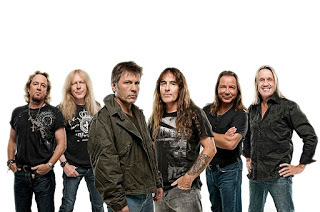 The Boys from Britain don't need no stinking HOF!
The Boys from Britain don't need no stinking HOF!Iron Maiden has been nominated for the Rock and Roll Hall of Fame.
My reaction? Who gives a shit.
Evidently I’m supposed to be excited by this news… I find myself feeling rather apathetic, with a smattering of bemusement and a (slight) bit of anger. I do recognize the considerable irony in stating “who gives a shit” and then spending my time writing a post about the news. Evidently I have some level of investment. But I’m writing this as much for as my own amusement as anything else.
A little history on my relationship to the Rock and Roll Hall of Fame. In the past I have kept tabs on the list of inductees. I was happy to see the likes of Black Sabbath and KISS eventually get in, though both are kind of no-brainers. I didn’t get too wrapped up in either nomination, because I figured it was a done deal. And it was (an aside: it took KISS, eligible for induction since 1999, FIFTEEN YEARS to get in, which it finally did in 2014).
My typical level of detached minor interest ratcheted up in 2018 when stupidly, I got wrapped up in the fan vote for Judas Priest. The Rock and Roll Hall of Fame includes a fan vote, with the top five acts in the popular vote earning what amounts to a single “vote.” These five bands then get that one vote added to the couple hundred votes cast by the real power-holders, the Rock and Roll Hall of Fame Committee, a shadowy cabal of unknowns who hold all the power of who gets in and who gets left “Out in the Cold” (pun intended).
As should be obvious by the formula, one fan vote stacked against a couple hundred “educated” votes by the “critics,” counts for next to nothing. I spent time--too much, as you can vote over and over again, though only once per day--voting on the HOF platform, only to see Priest—which did get in the top five in the fan vote—get croaked by the committee.
So, in 2018 Judas Priest—a band who revolutionized heavy metal by adding an iconic sound (the twin guitar attack) and establishing its iconic look (leather and studs), immortal songs like “You’ve Got Another Thing Coming” and “Breaking the Law,” and a 50+ year legacy of influencing countless bands—lost to the likes of Nina Simone.
Since then Priest has failed to make it any further, to the Hall’s eternal shame.
That brings me to Iron Maiden, another personal favorite band of mine about whom I’ve made my love abundantly clear here on the blog.
Maiden has had a career that would turn 90% of the previously inducted acts’ faces green with envy. I don’t think people outside of heavy metal circles understand how massively popular and influential these guys are. They’ve been selling out sports arenas (pre-COVID of course) for 40 years. They’ve sold more than 100 million copies of their albums worldwide, all without any commercial airplay or support. At one point VH1 ranked them No. 24 in their “100 Greatest Artists of Hard Rock.”
It’s utterly absurd to think that they need to add a Hall of Fame credential to justify whether or not they are great, or influential on the development of rock-and-roll. But frankly, it’s the “hard” part of “hard rock” that makes Maiden an unlikely candidate for Hall of Fame acceptance.
The fact is, the voting on the Rock and Roll Hall of Fame is calculatedly political, and archly snobbish, and therefore actively hostile to brash, loud, metal acts. Heavy metal can never get its just due in this stifling, narrow-minded environment. Even relatively safe, mainstream party rock acts like KISS only get a look when their case is so overwhelmingly obvious that to leave them out would compromise any shred of validity the enterprise still holds.
Bruce Dickinson has voiced his opinions very clearly on the Hall of Fame, calling the Hall "an utter and complete load of bollocks" that is "run by a bunch of sanctimonious bloody Americans who wouldn’t know rock ’n’ roll if it hit them in the face." Go Bruce.
So in the end, it does not matter whether Maiden gets in. Their career speaks for itself. When Maiden is finally retired and gone, the echoes of “Hallowed be thy Name” and “Rime of the Ancient Mariner” will ring through the ages, long after most of the acts in the Hall of Fame have been forgotten.
Unlike 2018 I will not waste a moment voting for Maiden. Not because I don’t love the band, but because the institution itself is corrupt. No Maiden, Priest, or Motorhead renders the Rock and Roll Hall of Fame utterly irrelevant.
February 12, 2021
Parasite, "Night Winds"
The first 1:02 of "Nightwinds," an obscure song by an obscure Swedish metal band named Parasite, encompasses everything I love about the heavy metal genre. Atmosphere. Grandeur. Power. Artistry.
Unfortunately the song is undone by its underwhelming chorus. Also, "breaking the nightwinds" sounds suspiciously like a nocturnal emission under the sheets. Oh well. But I also love the incredibly cheesy depths that metal occasionally descends into. It's all part of the charm.
Anyways, crank up this clip from Youtube, and listen to at least the first minute or so. You have to play metal loud or it doesn't work.
February 6, 2021
Some ramblings on old school tastes in music, reading
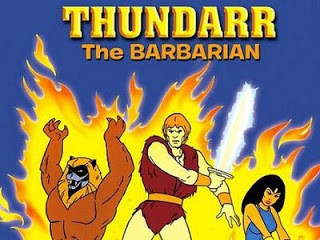 Now that's old school.
Now that's old school.I was glancing at my bookshelves recently, as I’m want to do when I’m in between books and scanning for the next title I want to read … or if it’s just Tuesday. And it struck me that my reading tastes are rooted firmly in the past.
My top shelf has got the collected works of Rudyard Kipling, Rafael Sabatini’s Scaramouche, and several books by E.R. Eddison and Poul Anderson. The next shelf down are the Lancer Conan Saga, Karl Edward’s Kane, and Edgar Rice Burroughs. Not exactly George R.R. Martin, Patrick Rothfuss, or John Scalzi. Any of which I could be into, but am really not, even if some day I do plan to finish A Song of Ice and Fire, if Martin ever gets around to it in his life.
I do take comfort in the fact that I’m not alone. An adherent of Anglo-Saxon literature and Icelandic Saga, J.R.R. Tolkien was of the mind that anything after the Canterbury Tales was (mostly) not worth his time. I’m glad I’m not that extreme, or else I never would have discovered The Lord of the Rings or “Beyond the Black River.” But, in another sense I’m quite like Tolkien, my eyes cast ever backwards at the literature of a lost age. We’ll never have another golden age of sword-and-sorcery, when drugstores carried Conan the Buccaneer on their wire spinners and Thundarr the Barbarian thundered through living rooms on Saturday mornings. But that doesn’t mean I’ve moved on from those glory days. Today my drugstore is Abe Books and Ebay, where I hunt down old copies of Pursuit on Ganymede and Raven 5: A Time of Dying. And I know there are many others like me, based on what I’ve seen in the Facebook groups I belong to.
My tastes in reading are analogous to my tastes in music, which is likewise the music of my youth. My favorite bands are Iron Maiden, Judas Priest, Black Sabbath, KISS, Rush, and AC/DC. Some of these guys are still writing new material—some of it damned good—but mostly they are associated with their heyday in the 70s and 80s. If you’re a fan, you’re ancient history, pal.
I would not say I’m a hopeless case, irrevocably trapped in the past. I can and do enjoy some new stuff. Battle Beast, a young Finnish metal band for example, caught my attention, and now have muscled their way into my playlist alongside the likes of Blind Guardian and Pantera. I like Joe Abercrombie, including the likes of The Heroes (2011). At this very moment I’m reading and enjoying Brian Keene’s The Lost Level (2015), which just came out in the last decade.
But on some level even these “new” finds are anachronistic, often deliberately so, which continues to prove my point that I like old shit. For example, The Lost Level is a clear homage to the likes of Edgar Rice Burroughs’ Pellucidar series. Battle Beast is an unabashed throwback to the 80s. It should come as no surprise that the band draws inspiration for its sound and lyrics from that era. Even in the new stuff I consume, I’m drawn inevitably to older forms of expression.
I do wonder: Do we develop our tastes during a formative time in our lives and become part of us forever? Does some biochemical process shape our malleable brains between the ages of 8-18, and permanently alter our mental wiring? Musician and musicologist Nolan Gasser offers some answers along those lines, arguing that the music you listened to as a youth placed you within a culture that formed part of your identity:
“I actually use the term ‘intraculture’ to describe cultures that take place within a culture,” he explains, likening them to subgenres of music. “A lot of it has to do with where you grew up and what kind of musical influences are in the air, but we participate in so many subcultures of affinity, just based on what we like. Intracultures provide us with access to music just because you’re a part of a group, and that group means something to you.”
“Music becomes that stake in the ground — ‘this is who I am,’” says Gasser. “But at the same time, the music people listened to at an early age becomes their native home comfort music. When they grow up, that music will be part of who they are, tied in with memories and growing up. All of these powers are why music is so important to us.”
There is no doubt that heavy metal had its own culture and ethos, one that I participated in, and on some level still do. I may be indistinguishable from your average everyday middle-aged middle class dude, but I have a metal spirit in me, an anti-authoritarian streak and a pride in having tastes that are harsher than the mainstream, even anathema in some quarters. I’m sure that’s part of the reason why I maintain such an enduring loyalty for these bands.
Interesting is my lack of nostalgia in other areas—I enjoy the latest psychology and self-help books, for example. I delight in the latest and greatest beer from new breweries (Heady Topper is way better than Pabst Blue Ribbon). I’ve come to enjoy podcasts as a new medium for consuming information and entertainment, even though I still prefer the printed page over e-books.
It’s really only certain forms of art, in particular music and fantasy literature, where my preferences clearly lie with works pre-1990.
Another possible explanation: Were the authors and musicians of my youth simply better at their craft? Were these subgenres—heavy metal and sword-and-sorcery—more widely practiced because they were more lucrative, or more creatively vital, and hence attracted more and greater talent, producing better art than we see today? Perhaps. Some authors can and did make a living writing for Weird Tales back in the day, and of course many metal acts made a fortune in the 80s. Artists don’t enjoy the same market realities today. The bar to writing and publishing stories and music is easier than ever, but I don’t believe it’s as easy to make a living at either these days.
Who knows. Be it a matter of identity and cultural imprinting, or idiosyncratic tastes, it’s hard to say why I enjoy the old shit. All I know that is that heavy metal and Tolkien and sword-and-sorcery were my obsessions then, remain so today, and likely always will be.
February 5, 2021
Sword-and-Planet Love-Letter: Gardner Fox’s Warrior of Llarn
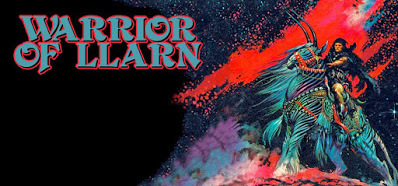 Warrior on a blue zebra with horns! In space...
Warrior on a blue zebra with horns! In space...New post up at the blog of Goodman Games, publisher of Tales from the Magician's Skull: Sword-and-Planet Love-Letter: Gardner Fox’s Warrior of Llarn.
I enjoyed this immensely and without reservation, too much for my own good. So much fun, and the pacing is basically a dead sprint. If you're bored reading Warrior of Llarn there's minimal to no hope for you. Definitely worth seeking out and reading. If you're a fan of Edgar Rice Burroughs' Mars series it will feel intensely... familiar. It's basically an homage to A Princess of Mars. But still great. Thief of Llarn doesn't rise to the same heights, but it's still good.
January 30, 2021
Of Heady Topper and the craft brewery revolution
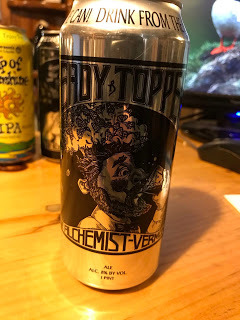 The OG, Heady Topper.
The OG, Heady Topper.I expend a lot of digital ink on The Silver Key writing about how my eyes were opened to a new kind of fantasy when I discovered Robert E. Howard, and the great passion and respect I have for the works of J.R.R. Tolkien. But have a couple other great passions. One of them is beer. And I can say without question that my life changed in 2014 when I drank my first can of Heady Topper.
I’m not sure how many of my visitors are from the New England region of the United States, but among the many reasons why I enjoy living here (along with fall, and the mountains of New Hampshire, and the seacoast) is the beer scene. New England gave birth to a style of beer that has become my favorite, the New England India Pale Ale, or NEIPA.
NEIPAs are characterized by their hazy appearance, citrus aroma, and hop-forwardness. Some are double dry hopped, with the likes of Citra, Mosaic, and Galaxy added in whole, late in the brewing process, to add even more hoppy goodness and piney bite. In the last decade the NEIPA has exploded in popularity and has become a staple at breweries everywhere. But we largely have Heady Topper, the OG, and the Alchemist Brewery in Vermont to thank.
I’ve never been a beer snob. I started with the likes of Budweiser, Miller Lite, and Coors, and will still drink a cold Coors Lite on a hot summer day. But in the late 90s I began to branch out and discover the joys of smaller breweries and styles beyond Lagers and Pilsners. Sam Adams Boston Lager was an early favorite, as was Harpoon IPA and Long Trail IPA. Blue Moon, a Belgian White, Sierra Nevada Pale Ale, and Magic Hat #9, another pale, were also early favorites. These were “craft beers” before the true small, local craft beer scene began to emerge in the late 2000s.
As the 21st century rolled around I started hearing about this new beer called Heady Topper. An article in the Boston Globe described Massachusetts residents driving for three hours up to Stowe, then waiting for another 2-3 hours in line, to get it. Who the hell would wait for a beer, when my local packie offers immediate convenience?
How good could it possibly be?
I had the chance to find out in 2015 while up in VT visiting some friends. My friend had picked up some Heady Topper, Focal Banger, and Crusher from the Alchemist, and I finally got to crack a few cans with him, in front of a wood fire in the cold mountains of VT.
Mind blown. My eyes were opened to what beer could truly be. I didn’t weep but something inside me was moved, and since then I’ve been all in on the craft beer crazy. Later I took a trek up to Stowe to buy a two-case allotment from the Alchemist. My wallet and waistline have paid the price.
Heady Topper is 8% ABV and packs a punch. It’s also very hop forward. You can’t give a new beer drinker a Heady Topper or any of the high IBU IPAs right out of the gate. It’s cruel, like plopping a wobbly new skier on a double black diamond ski run. You need to build up to it, condition your palette, before taking that kind of plunge. I don’t believe I could have enjoyed Heady had not I had a history of drinking Harpoon and Sierra Nevadas and the like.
Since Heady Topper many other amazing NEIPAs have come along with their own takes on the style, and many believe the Alchemist has been surpassed. That could very well be the case. My personal favorite is Bissell Brothers Brewing in Portland, ME, whose Swish (which can only be purchased at the brewery, in limited releases, and for which I have waited nearly 2 hours in line to obtain) is so good that words fail me. I also love their flagship Ale, Substance, as well as Reciprocal. They don’t make a bad beer.
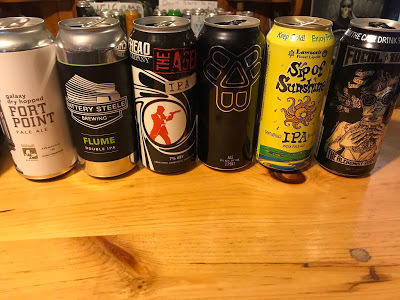 Heavy hitters. From left to right, Trillium Fort Point, Battery
Heavy hitters. From left to right, Trillium Fort Point, Battery Steele Flume, Kettlehead The Agent, Swish (Bissell Brothers),
Sip of Sunshine, and Focal Banger (Alchemist)
Other favorite beers and breweries include:
Fort Point, Trillium Brewing, Boston MA (actually a pale, but double dry hopped and in same ballpark as the New England IPAPonyhawk, Resilience Brewing, Littleton NHFlume, Battery Steele Brewing, Portland MESip of Sunshine, Lawson’s Finest Liquids, Waitsfield VT (though brewed elsewhere)It’s Complicated Being a Wizard, Burlington Beer Company, Shelburne, VTThe Agent, Kettlehead Brewing, Tilton, NHFiddlehead IPA, Fiddlehead Brewing Company, Shelburne VTI do like other styles of beer beyond the IPA. There is an amazing brewery about 10 minutes from my house in neighboring Amesbury, Brewery Silvaticus, which makes wonderful German inspired ales and lagers and stouts, amazingly well-balanced beers that are a joy to drink. It’s wonderful to walk into Silvaticus and see the stainless steel brewing tanks set against old brickwork, drink a beer or three, shoot the shit, and watch the world go by.
Today local craft breweries are springing up everywhere. While the pandemic has certainly slowed their growth and put a few out of business, from 2008 through 2016 craft breweries grew sixfold. Their superior product has put a major dent in the goliaths. Over the same period shipments from the likes of Anheuser-Busch, MillerCoors, Heineken, Pabst, fell 14%. Local craft breweries have the advantage of producing fresher, unpasteurized beer, hyper-locally, and often offer great atmosphere and personality. The small breweries of today remind me somewhat of the classic Irish Pubs. Instead of loud music and 20-somethings pressed shoulder-to-shoulder, swilling shit beer, craft breweries gather folks of all ages to gab, and revel in well-made local product.
I’m very glad to be living in this golden age of beer.



